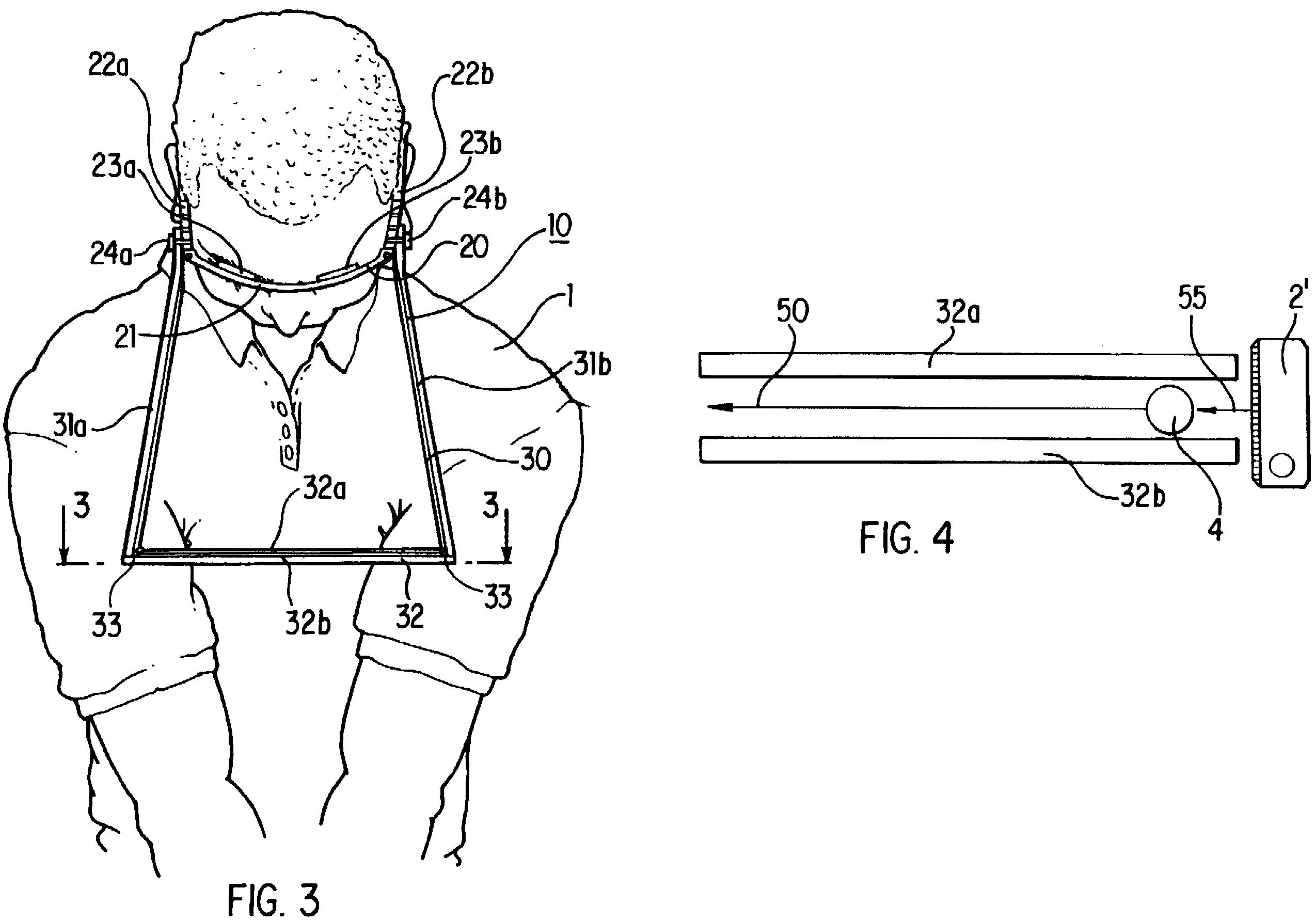Take Two Putts Off My Round and I Would Gladly Wear This Contraption
Can you imagine this device helping your putting?
With that stance and grip it is no wonder that he has putting problems. The drawings come from USPN 5,752,887 titled “Golf Aid Device,” which describes the invention as:
Interesting!
Dave Dawsey - Watching Golf Teaching Patents
PS – check out additional putter patents HERE
The subject golf aid device is generally directed to a practice or training aid to be used by a golfer. More specifically, the subject golf aid device is a device worn on the head of a user which establishes in the user's line of sight to the golf ball to be struck a visual guide for properly striking that ball. The visual guide is maintained in self-adjusting manner such that its orientation relative to the playing surface on which the ball is resting remains substantially unchanged even if the user tilts his or her head along one or more predetermined planes of motion.
Over recent years, the sport of golf has gained an unprecedented level of popularity. With the proliferation of readily accessible golf facilities and the wide public exposure received by various golf personalities, both men and women, young and old; the popularity of golf continues to grow rapidly. Consequently, there is an ever-increasing need for training and practice aids for aiding the user in perfecting his or her golf skills.
Invariably, the adequacy of a user's golfing skills comes down to the user's ability to impart a desired direction of initial travel to the ball he or she is to strike. Doing so requires the precise coordination of numerous concurrent bodily movements, though the degree of such required movements varies depending on the type of shot being made (drive, putt, and the like). While those more experienced and skilled in golf will obviously be more adept at coordinating such movements than those of lesser experience and skill, every golfer must routinely practice the movements to at least retain, if not improve, his or her skill level.
Numerous golf training and practice devices are currently available to aid users in practicing and enhancing their golf skills. Some of these devices are specifically designed to provide a visual guide that outlines for the user a direction of travel along which he or she should attempt to strike the ball. These devices, however, are very difficult to properly use, except for the most skilled of golfers.
The concurrent bodily movements that must be precisely coordinated for any proper golf swinging action include, among others: a twisting rotation of the shoulders, rotation of the chest, and a swinging of the arms. In coordinating all these movements, it is preferable that superfluous bodily movements, such as tilting of the head, be eliminated. Such superfluous bodily movements, though, are extremely difficult to restrain while concurrently generating and coordinating the rather delicate and complex set of necessary bodily movements. Those necessary bodily movements, tend, naturally, to cause a corresponding rotation and tilt of the head; and, without much practice and skill, it is quite difficult to consistently keep the head steadily stationary during the course of a swinging action.
Visual guide-establishing golf aids known in the prior art fail to make adequate provision for this type of head movement that many insufficiently experienced golfers are hampered by. Typically, those prior art devices are affixed, either to a hat or other structure worn on some part of the user's head, in such manner that the training device necessarily moves with the head. Hence, when the user moves his or her head during the course of the swinging action, the visual guide established by the training device also moves, compromising its efficacy. A need exists for a more forgiving golf training or practice aid that substantially preserves the efficacy of the visual guide it establishes, even if the user moves his or her head in a typical manner.
Interesting!
Dave Dawsey - Watching Golf Teaching Patents
PS – check out additional putter patents HERE



Comments